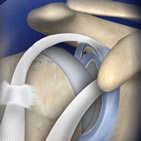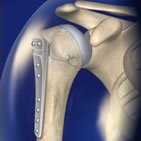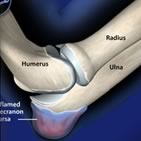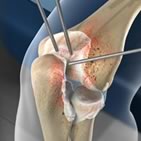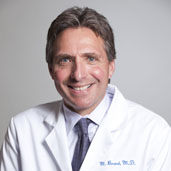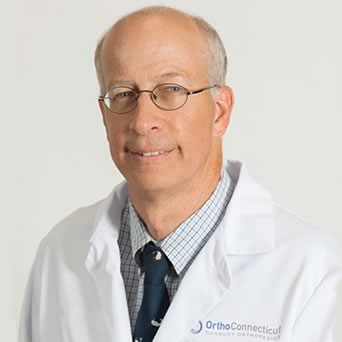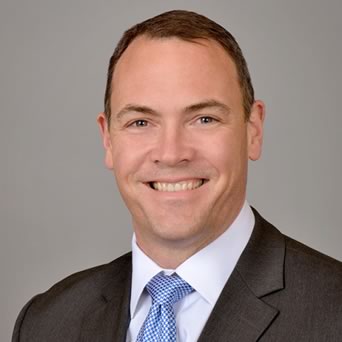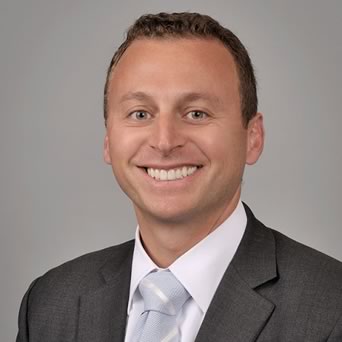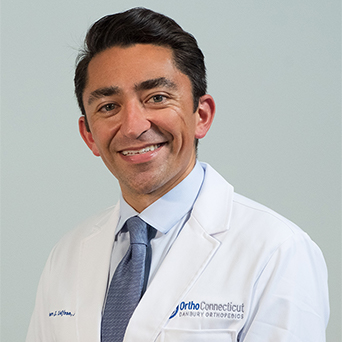Sports and Shoulder Injury Treatment and Rehabilitation
The Sports Medicine Center is dedicated to caring for athletes—from professional, collegiate, and high-school athletes to recreational players and weekend warriors. Our fellowship-trained sports medicine physicians, shoulder/upper extremity physicians, and sports medicine board-certified physiatrist all specialize in sports injury treatment and rehabilitation through both surgical and nonsurgical techniques. Our integrated team approach brings together doctor, trainer, and sports therapist to achieve optimal patient outcomes.
OrthoConnecticut’s Sports Medicine specialists are highly experienced in the diagnosis and treatment of the full spectrum of sports injuries, including torn ACLs, rotator cuff tears, complicated multi-ligament injuries, and tendonitis.
At The Sports Medicine Center patients are treated by the most highly trained and experienced doctors close to their home and work; there’s no need to travel into New York City for premier care. Our physicians employ state-of-the-art techniques and, when necessary, carefully select prosthetic devices and implants based on a thorough assessment of each patient’s needs. We provide complete sports injury treatment, including an integrated physical therapy rehabilitation program staffed by sports therapists who specialize in working with athletes. We try to minimize postoperative recovery time while restoring natural motion so you can return to the sport you love as quickly as possible.
Educational Animations
Our team of sports medicine specialists include:
Sports Medicine Conditions and Treatment Frequently Asked Questions
What does a Sports Medicine Physician do?
Sports medicine physicians specialize in working with athletes and people who are physically active. They might work with professional athletes, but they also work with everyday individuals who do physical activity, exercise or experience pain in the knee and hip joints. Physicians specializing in sports medicine work to help people improve performance, enhance health, prevent injury, and maintain physical activity throughout their lives. Most work done by sports medicine physicians is non-surgical and involves:
- Diagnosing and treating sports-related injuries and illnesses
- Using exercises or other techniques to prevent and/or treat common musculoskeletal conditions
- Having a deep understanding of athletic conditioning and training and sharing this knowledge with patients
- Preventing injury related to physical activity
- Focusing on rehabilitation after sports-related injuries
- Providing nutritional advice to help patients build strength and endurance
What is Orthopedic Sports Medicine?
Orthopedic doctors focus on the bones, muscles, joints, ligaments, nerves, and tendons that make up the human body. Orthopedic sports medicine is a subset of orthopedics that focuses on these musculoskeletal structures and how they might be affected by physical activity and exercise. What sets them apart from general sports medicine physicians is their specialized training in understanding the complex network of bones, ligaments, tendons, and muscles that make up our bodies. Orthopedic sports medicine specialists also perform surgery on athletes and others with sports-related injuries. These procedures may include:
- Shoulder, hip, knee, or ankle arthroscopy
- Knee, hip, or shoulder replacement
- ACL reconstruction
- Tendon repair
- Meniscus repair
- Shoulder injection
- Rotator cuff repair
- Microfractures
- Cartilage repair
- External or internal fixation
What is the Difference Between Sports Medicine and Physical Therapy?
Apart from sports medicine’s specialized focus on physical activity and sports, the main difference between sports medicine and physical therapy is that sports medicine physicians can offer a variety of different treatment methods that includes surgery. On the other hand, physical therapists work with stretching and strengthening exercises to aid in recovery. Physical therapists will also work with the general public and do not focus solely on sports-related injuries.
There is also a difference in the education that sports medicine physicians and physical therapists receive. Sports medicine orthopedic surgeons have a medical degree (M.D.), have completed general surgery and sports medicine residency programs, and a fellowship program where complex surgical techniques are studied. Physical therapists receive a doctor of physical therapy degree.
What Distinguishes Acute and Chronic Sports Injuries?
An acute injury is a new injury that comes on suddenly and causes severe pain. Meanwhile, chronic injuries are longer-lasting and have ongoing effects on the body. Acute sports injuries generally come from sudden trauma to the body during physical activity. Symptoms of an acute sports injury may include extreme tenderness to the area, an arm or leg that can’t support weight, sudden severe pain, swelling, lack of mobility in a joint, or dizziness after being hit on the head. Examples of acute sports injuries include:
- Broken bones
- Concussion
- Dislocation
- Fracture
- Knee injuries (ex: ACL and meniscus tears)
- Muscle sprains and strains
- Rotator cuff tears
Chronic sports injuries develop over time due to repetitive athletic movement that causes stress on the body’s muscles, bones, joints, or tendons. They are most common in long-distance athletes like runners, cyclists, swimmers, and triathletes. Chronic sports injuries are the result of overuse that causes wear and tear over time. Though not always caused by bad technique, improving your technique can help in preventing the onset of chronic conditions. Chronic sports injuries include:

